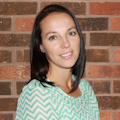A direct access hygienist asks herself: Is this working?
How do you know when it is time to let something go? Is there a specific amount of money, time, and effort that need to be spent before one can measure a success or failure? These are questions that I have been tossing back and forth in my head for the past few months.
Typically, I begin these questions around the time that I have a day in the nursing home. The farther out I get from that day, the less the questions get, and I find that I don’t feel so conflicted about those questions, until the next time I’m there.
I’ve been struggling lately with the idea of either dissolving my collaborative agreement or continuing with the program as it sits. Part of me really wants to continue, as I know I am making a difference and bringing awareness to the needs of these residents. On the other hand, I am not satisfied with how the program is functioning at this point. If I continue with how things are currently going, then I feel I am setting an expected standard that is less than ideal, and I don’t think I am alright with that. I want to implement a program that is effective, accepted, appreciated, and successful.
There are a couple of ways that I have considered going about reaching that ideal, or at least getting much closer to it. Initially, my thoughts are to continue with what I have going, making changes and addressing needs as they come up. This is the process I have been following for the past 18 months. Some days I feel like this process works well—all programs will go through stages of changes, nothing will ever remain the same. Then, other days, I feel like the changes that I am making are not necessarily improving the outcome.
I want to share a little about one of my more recent visits that has created some conflict in me. I arrived at the facility with only one patient to be seen that day. Knowing the she is not comfortable being seen in a wheelchair or transferred to my dental chair, I decided to accommodate this resident in her room. I came right before breakfast to find that she had not risen for the day yet but still wanted to have her teeth cleaned, so I stepped out of her room and waited in the hall for her to complete her morning routine. I was busy answering emails, completing her paperwork, etc., while out in the hall. After a few minutes I heard her call for help, not urgently, but still indicating that she needed some form of assistance. There are facility staff traveling the halls this morning getting others up and about, and I attempted to get someone’s attention to help. With no luck, I listened to her call out for me two more times before I stepped into her room to see what I could help with.
I pause here to offer a disclaimer. In no way do I wish to indicate that this resident was being neglected by the staff at this point. I step in to her room and ask what I can do for her. I initially noticed when I entered the room that the call button on the wall beside her toilet was on, and I could hear the alarm sounding in the nurse’s station down the hall. She had used the restroom, but had forgotten to bring with her a new pair Depends and shorts. This seems like a simple enough request, and with her permission and instruction I find these items in her room and hand them to her through the bathroom door. I intend on retreating back to the hall at this point to allow her to continue and give her some privacy, but she again requests my help as she is unable to put on these items by herself and will need help getting up off the toilet.
The unfolding of this situation made me stop and think about my presence in the facility. There is nothing other than the loupes hanging from my neck that set me apart from the rest of the staff. The residents have no idea that I am not trained to assist them with many things, and to be fair, many of the staff have no idea that I am not trained for certain tasks. For example, I have no training on transferring from a wheelchair. Choosing to help someone could potentially be a liability for me should he or she become injured. I really dislike the feeling that I have to hesitate and consider the potential for injury if I try to help someone. I dislike even more hearing these residents call to me as I walk by their rooms and the feeling I get when I don’t stop to help. They don’t know that I can’t help or shouldn’t help. I am wearing scrubs, just like the rest of the staff, in their eyes that is the only indication of someone that can help.
I left the facility that day after completing her care with many frustrations, some old and some new. I have to spend some time considering my options, weighing the risks and benefits, and determining if what I have currently functioning is adequate to show measurable benefit to the patient. I have recently begun to look closer at what is guiding how I approach this. The scope of practice in my state is pretty limiting when it comes to providing care. We are listed as a direct access state, although I have a really hard time seeing how we made the list, but that is another story.
Thank you for hearing me out. As always, I look forward to your thoughts and suggestions. Please reach out to [email protected].
Editor's note: This article first appeared in RDH eVillage. Click here to subscribe.
For the most current dental articles, click here.
About the Author

Amy Ericks, BSDH, RDH
After 6 years of full-time clinical practice, Amy Ericks, BSDH, RDH, decided to pursue a journey to bring dental hygiene services to a long-term care facility. This often-neglected population has been on her mind for some time, and she is humbled to be able to be making a difference in their care. Here she walks us through her journey as she navigates this exciting new career path, stumbling blocks and all. She is also currently the president-elect of the South Dakota Dental Hygiene Association and is hopeful and encouraged about the impact she may have within her state.


